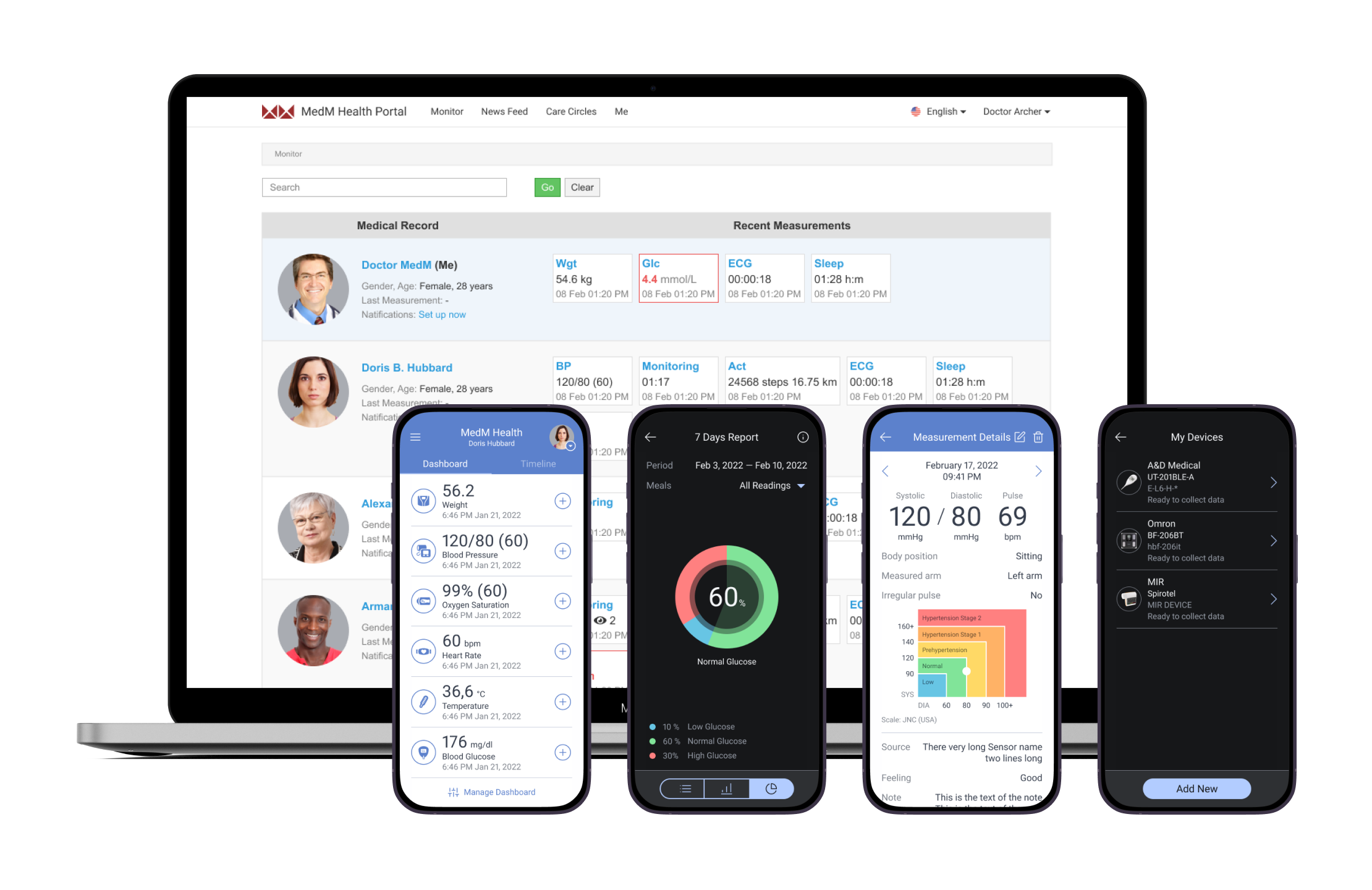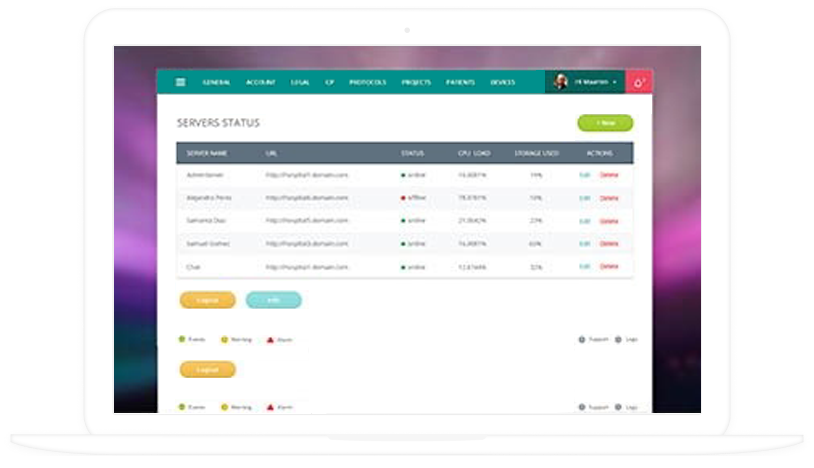Cutting-Edge RPM Software: Boost Patient End Results with Modern Technology
Cutting-Edge RPM Software: Boost Patient End Results with Modern Technology
Blog Article
The Future of Health Care: Remote Patient Checking Simplified
As health care proceeds to progress, one location that holds enormous assurance is remote patient tracking. The idea of streamlining this procedure with technical advancements is improving the way treatment is supplied and received. With a concentrate on improving individual end results and simplifying healthcare shipment, remote tracking is positioned to revolutionize the industry. By exploring the advantages, technological advancements, and future fads in this field, we can acquire important insights right into the transformative capacity of remote individual surveillance.
Benefits of Remote Individual Surveillance
Remote patient monitoring provides a multitude of advantages for both medical care service providers and individuals alike. In addition, remote patient tracking enhances the general top quality of care by supplying an extra all natural and thorough sight of individuals' health status past typical in-person sees.
Moreover, remote individual tracking can bring about better client results and satisfaction. Clients can appreciate the convenience of receiving care in the comfort of their very own homes while still recognizing that their health is being closely checked. This can cause increased patient interaction and adherence to treatment plans, eventually causing far better wellness end results. Furthermore, remote monitoring can decrease the need for frequent healthcare facility sees, reducing health care prices for both clients and service providers. On the whole, the benefits of remote person surveillance are clear, making it a valuable device in modern-day medical care shipment.
Technology Driving Remote Surveillance
In the world of modern medical care, technological advancements play a crucial function in driving the evolution and effectiveness of remote person tracking. The assimilation of ingenious technologies such as wearable tools, mobile applications, and cloud-based platforms has actually transformed the means healthcare service providers from another location take care of and keep track of patient health and wellness - software for remote patient monitoring. These modern technologies enable continual real-time surveillance of important indicators, medication adherence, and other critical health and wellness information, enabling timely treatments and individualized treatment strategies
One key modern technology driving remote monitoring is the Internet of Points (IoT), which makes it possible for seamless connectivity between clinical devices and medical care systems. IoT devices such as smartwatches and wireless sensing units accumulate and transmit patient data to centralized platforms, facilitating remote surveillance from anywhere in the world. Man-made knowledge (AI) and equipment knowing algorithms additionally boost remote surveillance by evaluating large quantities of person information to discover patterns, predict health and wellness fads, and sharp doctor to potential concerns.
Influence On Medical Care Delivery
With the assimilation of sophisticated technologies driving remote individual surveillance, the influence on healthcare delivery is becoming transformative and significantly extensive. Remote person surveillance permits health care providers to provide more proactive and personalized treatment to individuals, causing enhanced health end results and lowered hospital admissions. By remotely tracking essential indications, symptoms, and medication adherence, medical care experts can intervene early, preventing difficulties and improving the overall quality of treatment.
Additionally, remote monitoring enhances accessibility to health care solutions, especially for individuals in country or underserved locations. People can obtain constant surveillance and support from their homes, eliminating the requirement for frequent in-person visits. This not just saves time and lowers expenses for both clients and healthcare centers however additionally lessens the risk of direct exposure to infectious conditions, a vital consideration in the present health care landscape.
Additionally, remote person tracking makes it possible for health care providers to far better prioritize and designate sources treatment based on real-time information. By recognizing high-risk people and intervening immediately, healthcare delivery becomes extra reliable and reliable, ultimately causing an extra lasting and patient-centered healthcare system.
Improving Individual Results

Moreover, RPM allows for aggressive monitoring of persistent problems, lowering the chance of intense exacerbations and healthcare facility readmissions. Individuals gain from enhanced benefit and comfort, as they can receive care in their very own homes while remaining linked to their doctor. This constant tracking not only enhances person contentment yet also fosters a feeling of empowerment and interaction in their own health monitoring.
Future Trends in Remote Tracking
Embracing cutting-edge modern technologies in remote individual monitoring is forming the future landscape of health care shipment. The future trends in remote monitoring are anticipated to reinvent the way medical care is supplied, making it much more efficient and patient-centric. One significant fad is the enhanced use wearable gadgets and sensors to accumulate real-time data, making it possible for health care companies to monitor individuals continuously without the demand for frequent in-person brows through. These devices can track essential signs, medicine adherence, and activity degrees, offering a thorough view of the individual's health my site condition.

In addition, telehealth platforms are ending up being a lot more sophisticated, enabling digital consultations, remote medical diagnosis, and remote individual keeping track of all in one incorporated system (remote patient monitoring platform). This all natural approach to remote tracking is improving medical care distribution, improving person fulfillment, and eventually, improving total quality of care
Conclusion
In final thought, remote patient monitoring offers many benefits in health care distribution, driven by improvements in innovation. It has the potential to enhance client outcomes and change the means healthcare is delivered. Future trends in remote monitoring will remain to form the landscape of medical care, giving possibilities for even more effective and customized client treatment.
Remote client tracking presents a multitude of advantages for both medical care providers and patients alike. In addition, remote person tracking improves the overall quality of treatment by supplying a more comprehensive and all natural sight of clients' health and wellness status beyond standard in-person visits.
Furthermore, remote person tracking can lead to better person results and contentment. Remote client surveillance enables medical care suppliers to offer more tailored and proactive care to people, leading to enhanced wellness results and lowered medical facility admissions. Remote person tracking (RPM) plays a substantial role in enhancing patient results by providing constant, real-time information that enables health care carriers to intervene immediately and adjust treatment strategies as required.
Report this page